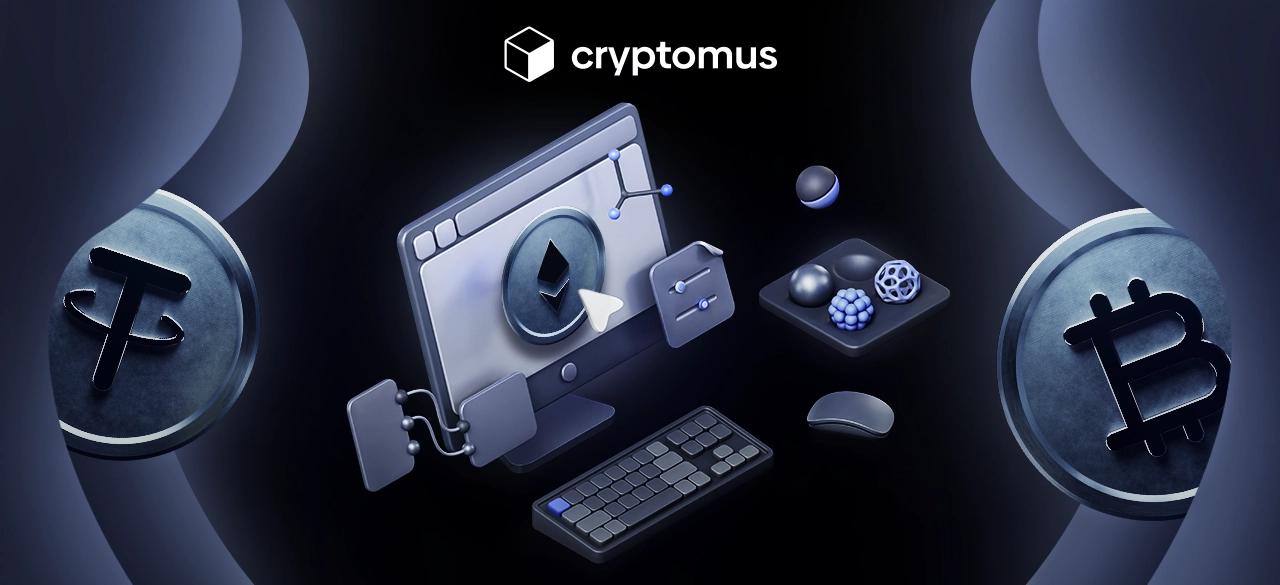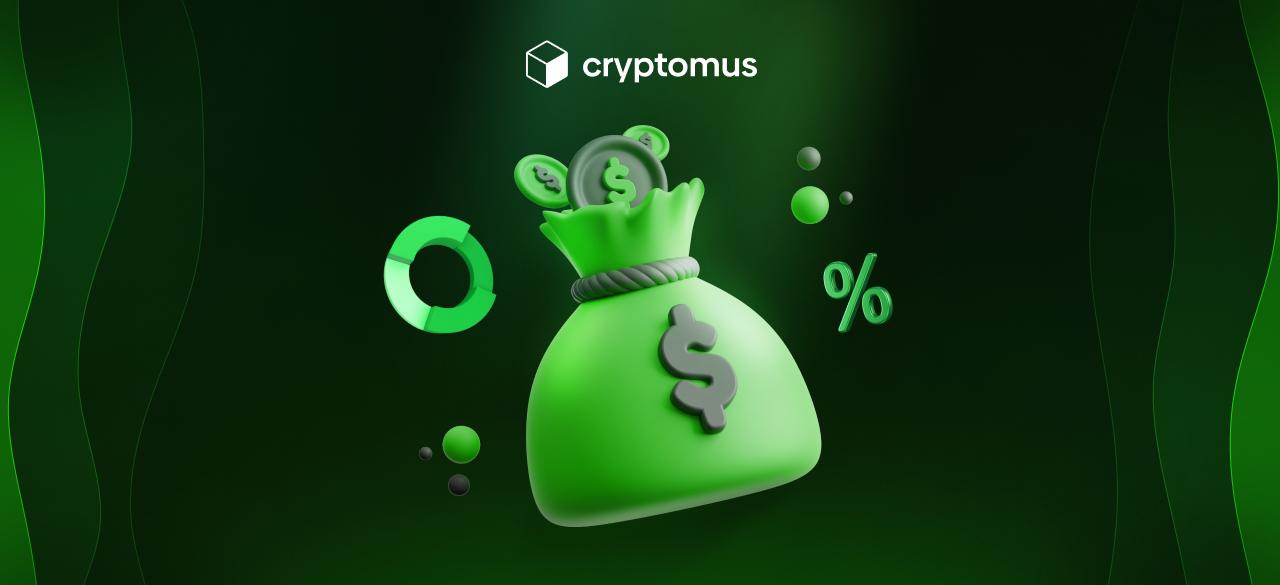
ਏਕੀਕਰਣ ਗਾਈਡ
ਜਦੋਂ ਕ੍ਰਿਪਟੋਕਰੰਸੀਜ਼ ਨੂੰ ਭੁਗਤਾਨ ਦੇ ਢੰਗ ਵਜੋਂ ਵਰਤਣ ਦੀ ਗੱਲ ਕੀਤੀ ਜਾਂਦੀ ਹੈ, ਤਾਂ ਇਹ ਯਾਦ ਰੱਖਣਾ ਚਾਹੀਦਾ ਹੈ ਕਿ ਉਨ੍ਹਾਂ ਨਾਲ ਭੁਗਤਾਨ ਕਰਨ ਦੀ ਪ੍ਰਕਿਰਿਆ ਕਲਾਸਿਕ ਭੁਗਤਾਨ ਤਰੀਕਿਆਂ ਜਿਵੇਂ ਕਿ ਬੈਂਕ ਕਾਰਡਾਂ ਜਾਂ ਈ-ਵਾਲਿਟਾਂ ਤੋਂ ਵੱਖਰੀ ਹੈ। ਇਸ ਲਈ, ਜਦੋਂ ਗਾਹਕ ਕਿਸੇ ਵੈੱਬ ਸਰਵਿਸ ਜਾਂ ਐਪਲੀਕੇਸ਼ਨ ਵਿੱਚ ਇਹ ਭੁਗਤਾਨ ਵਿਧੀ ਵਰਤਦੇ ਹਨ, ਤਾਂ ਉਨ੍ਹਾਂ ਨੂੰ ਕੁਝ ਸੁਝਾਅ ਪਤਾ ਹੋਣੇ ਚਾਹੀਦੇ ਹਨ ਕਿ ਭੁਗਤਾਨ ਦੀ ਪ੍ਰਕਿਰਿਆ ਨੂੰ ਕਿਵੇਂ ਸੁਵਿਧਾਜਨਕ ਅਤੇ ਆਸਾਨ ਬਣਾਇਆ ਜਾ ਸਕਦਾ ਹੈ।
ਪਹਿਲੇ ਕਦਮ
ਇੰਟੀਗ੍ਰੇਸ਼ਨ ਦੇ ਵੱਖ-ਵੱਖ ਕਿਸਮਾਂ ਹਨ: API, plugins, buttons, payment links।
ਤੁਸੀਂ ਕੋਈ ਵੀ ਇੰਟੀਗ੍ਰੇਸ਼ਨ ਕਿਸਮ ਚੁਣੋ, ਸਭ ਤੋਂ ਪਹਿਲਾਂ ਤੁਹਾਨੂੰ ਤਿੰਨ ਸਧਾਰਣ ਕਦਮ ਪੂਰੇ ਕਰਨੇ ਹੋਣਗੇ:
ਕਦਮ 1
ਰਜਿਸਟ੍ਰੇਸ਼ਨ – ਆਪਣਾ ਈਮੇਲ ਐਡਰੈੱਸ ਜਾਂ ਫ਼ੋਨ ਨੰਬਰ ਦਰਜ ਕਰੋ। ਪੁਸ਼ਟੀ ਕਰਨ ਤੋਂ ਬਾਅਦ, ਤੁਸੀਂ ਆਪਣੇ ਖਾਤੇ ਵਿੱਚ ਲੌਗ ਇਨ ਕਰੋਂਗੇ।

ਕਦਮ 2
➜ ਪ੍ਰੋਜੈਕਟ ਬਣਾਓ (Merchant) – Business ਟੈਬ 'ਤੇ ਜਾਓ।

➜ ”Create a Merchant” ਬਟਨ 'ਤੇ ਕਲਿੱਕ ਕਰੋ।

➜ ਪ੍ਰੋਜੈਕਟ ਦਾ ਨਾਮ ਦਰਜ ਕਰੋ।

ਕਦਮ 3
ਇੰਟੀਗ੍ਰੇਸ਼ਨ ਦੀ ਕਿਸਮ ਚੁਣੋ ਜਾਂ ਇਸ ਕਦਮ ਨੂੰ ਹੁਣ ਲਈ ਛੱਡ ਦਿਓ।

ਤੁਸੀਂ ਸਫਲਤਾਪੂਰਵਕ ਆਪਣਾ ਨਵਾਂ ਪ੍ਰੋਜੈਕਟ ਬਣਾਇਆ ਹੈ! ਹੁਣ ਤੁਹਾਡੇ ਕੋਲ ਦੋ ਵਾਲਿਟ ਹਨ।
-
Personal wallet – ਇਹ ਤੁਹਾਡਾ ਵਾਲਿਟ ਹੈ ਜਿੱਥੇ ਤੁਸੀਂ ਆਪਣੀ ਕ੍ਰਿਪਟੋਕਰੰਸੀ ਸਧਾਰਣ ਤਰੀਕੇ ਨਾਲ ਸੰਭਾਲ, convert, ਅਤੇ transfer ਕਰ ਸਕਦੇ ਹੋ।
-
Business wallet – ਇਹ ਉਹ ਵਾਲਿਟ ਹੈ ਜਿੱਥੇ ਤੁਸੀਂ ਨਵੇਂ ਪ੍ਰੋਜੈਕਟ ਬਣਾਉਣ, invoices ਜਾਰੀ ਕਰਨ, widgets ਸੈੱਟ ਕਰਨ, ਭੁਗਤਾਨ ਸਟੈਟਿਸਟਿਕਸ ਵੇਖਣ, ਅਤੇ ਹੋਰ ਕਈ ਫੰਕਸ਼ਨ ਵਰਤ ਸਕਦੇ ਹੋ।
ਹੁਣ ਆਓ ਇੰਟੀਗ੍ਰੇਸ਼ਨ ਦੀਆਂ ਕਿਸਮਾਂ ਬਾਰੇ ਗੱਲ ਕਰੀਏ।
ਇੰਟੀਗ੍ਰੇਸ਼ਨ ਦੀਆਂ ਕਿਸਮਾਂ
ਤੁਸੀਂ ਕਿਵੇਂ ਸਮਝੋਂ ਕਿ ਤੁਹਾਡੇ ਲਈ ਕਿਹੜੀ ਇੰਟੀਗ੍ਰੇਸ਼ਨ ਢੰਗ ਠੀਕ ਹੈ?
ਲਿੰਕ ਰਾਹੀਂ ਭੁਗਤਾਨ
ਇਹ Cryptomus ਨਾਲ ਕ੍ਰਿਪਟੋਕਰੰਸੀ ਭੁਗਤਾਨ ਸਵੀਕਾਰਨਾ ਸ਼ੁਰੂ ਕਰਨ ਦਾ ਸਭ ਤੋਂ ਸੌਖਾ ਤਰੀਕਾ ਹੈ।
ਇਹ ਫੀਚਰ ਯੂਜ਼ਰਾਂ ਨੂੰ ਬਿਨਾਂ ਵੈਬਸਾਈਟ ਬਣਾਉਣ ਅਤੇ Cryptomus ਨਾਲ ਜੋੜਨ ਤੋਂ ਬਿਨਾਂ ਖਾਤਾ ਬਣਾਉਣ ਦੀ ਆਗਿਆ ਦਿੰਦਾ ਹੈ।
ਕਦਮ 1
➜ ਆਪਣੇ ਮਰਚੈਂਟ ਖਾਤੇ ਦੇ ਮੁੱਖ ਪੰਨੇ 'ਤੇ ”Create invoice” 'ਤੇ ਕਲਿੱਕ ਕਰੋ।

ਕਦਮ 2
➜ ਭੁਗਤਾਨ ਵੇਰਵੇ ਭਰੋ।

ਕਦਮ 3
➜ ”Create payment” 'ਤੇ ਕਲਿੱਕ ਕਰੋ।
ਕੋਈ ਵੀ ਇਹ ਕੰਮ ਕਿਸੇ ਵੀ ਥਾਂ ਤੋਂ ਕਰ ਸਕਦਾ ਹੈ। ਇੰਟੀਗ੍ਰੇਸ਼ਨ ਪ੍ਰਕਿਰਿਆ ਵਿੱਚੋਂ ਲੰਘਣ ਦੀ ਕੋਈ ਲੋੜ ਨਹੀਂ ਹੈ – ਸਿਰਫ਼ ਆਪਣਾ ਖਾਤਾ ਬਣਾਓ ਅਤੇ ਓਥੇ ਹੀ ਤੁਰੰਤ “ਇਨਵੌਇਸ” ਤਿਆਰ ਕਰੋ।
ਇਹ ਫੰਡ ਪ੍ਰਾਪਤ ਕਰਨ ਨੂੰ ਆਸਾਨ ਬਣਾ ਦਿੰਦਾ ਹੈ, ਖ਼ਾਸ ਕਰਕੇ ਜੇ ਤੁਸੀਂ ਕਿਸੇ ਪੈਸੇ ਦੀ “ਟ੍ਰਾਂਸਫ਼ਰ”, ਤਨਖਾਹ ਦੀ ਉਡੀਕ ਕਰ ਰਹੇ ਹੋ, ਜਾਂ ਸਿਰਫ਼ ਇੱਕ ਲਿੰਕ ਦੀ ਲੋੜ ਹੈ ਜਿਸ ਨਾਲ ਸੁਵਿਧਾਜਨਕ ਭੁਗਤਾਨ ਇੰਟਰਫੇਸ ਮਿਲੇ।
ਇੱਕ “ਇਨਵੌਇਸ” ਬਣਾਓ, ਲਿੰਕ ਨੂੰ “ਈਮੇਲ” ਰਾਹੀਂ ਭੇਜੋ, ਕਿਸੇ “ਮੇਸੇਂਜਰ” ਵਿੱਚ ਭੇਜੋ, ਜਾਂ ਕਿਤੇ ਵੀ ਛੱਡ ਦਿਓ ਅਤੇ ਪੈਸੇ ਪ੍ਰਾਪਤ ਕਰੋ! ਇਹ ਤਰੀਕਾ ਆਮ “ਸਟੋਰਜ਼” ਅਤੇ “ਆਫ਼ਲਾਈਨ ਬਿਜ਼ਨਸਜ਼” ਵਿੱਚ ਵੀ ਵਰਤਿਆ ਜਾ ਸਕਦਾ ਹੈ।
“ਪਲੱਗਇਨਜ਼”
-
WooCommerce: WooCommerce crypto gateway
-
OpenCart: add payment gateway in OpenCart
-
PrestaShop: add payment gateway in PrestaShop
-
Shopify
-
BillManager
-
RootPanel
-
XenForo
-
PHPShop
-
Tilda
ਅਤੇ ਹੋਰ ਕਈ, ਇਹ ਸਾਰੇ ਕ੍ਰਿਪਟੋਮਸ ਪਲੱਗਇਨਜ਼ ਪੇਜ 'ਤੇ ਉਪਲਬਧ ਹਨ।
“ਏਪੀਆਈ”
ਸਾਡੀ “ਏਪੀਆਈ ਡਾਕਯੂਮੈਂਟੇਸ਼ਨ” ਵੇਖੋ ਅਤੇ ਆਪਣੀ “ਏਪੀਆਈ ਕੀ” ਦੀ ਵਰਤੋਂ ਕਰਕੇ ਇੰਟੀਗ੍ਰੇਟ ਕਰੋ।
ਫੰਡ ਪ੍ਰਾਪਤ ਕਰਨ ਲਈ ਇੱਕ “ਏਪੀਆਈ ਕੀ” ਜਾਰੀ ਕਰਨ ਲਈ:
➜ ਆਪਣੇ “ਮਰਚੈਂਟ” → “ਸੈਟਿੰਗਜ਼” ਵਿੱਚ ਜਾਓ

➜ “ਲੀਵ ਅ ਰਿਕਵੇਸਟ” ਟੈਬ ਵਿੱਚ ਜਾਓ

➜ ਆਪਣਾ “ਵੈਬਸਾਈਟ ਐਡਰੈੱਸ” ਅਤੇ ਛੋਟੀ ਵਰਣਨਾ ਦਰਜ ਕਰੋ

➜ ਆਪਣਾ “ਡੋਮੇਨ” ਪੁਸ਼ਟੀ ਕਰੋ

➜ ਮੁਕੰਮਲ!
Withdrawals ਲਈ “ਏਪੀਆਈ ਕੀ” “ਅੰਦਰੂਨੀ ਸੈਟਿੰਗਜ਼” ਵਿੱਚ ਸਥਿਤ ਹੈ।

ਕਿਰਪਾ ਕਰਕੇ ਯਾਦ ਰੱਖੋ ਕਿ ਕ੍ਰਿਪਟੋਮਸ ਤੁਹਾਨੂੰ ਇੰਟੀਗ੍ਰੇਸ਼ਨ ਪ੍ਰਕਿਰਿਆ ਦੌਰਾਨ ਕਿਸੇ ਵੀ ਸਮੱਸਿਆ ਵਿੱਚ ਮਦਦ ਕਰਨ ਲਈ ਪੂਰੀ ਸਹਾਇਤਾ ਪ੍ਰਦਾਨ ਕਰਦਾ ਹੈ। ਤੁਸੀਂ ਸਾਡੀ “ਸਪੋਰਟ ਸਰਵਿਸ” ਨਾਲ ਵੈਬਸਾਈਟ ਰਾਹੀਂ ਜਾਂ “ਟੈਲੀਗ੍ਰਾਮ” ਵਿੱਚ ਯੂਜ਼ਰਨੇਮ @cryptomussupport ਦੁਆਰਾ ਸੰਪਰਕ ਕਰ ਸਕਦੇ ਹੋ, ਜਾਂ ਸਾਨੂੰ support@cryptomus.com 'ਤੇ ਲਿਖ ਸਕਦੇ ਹੋ।
ਕ੍ਰਿਪਟੋਮਸ ਇੱਕ “ਪ੍ਰਸਨਲ ਮੈਨੇਜਰ” ਵਿਕਲਪ ਵੀ ਦਿੰਦਾ ਹੈ। ਰਜਿਸਟ੍ਰੇਸ਼ਨ ਤੋਂ ਬਾਅਦ ਅਤੇ ਆਪਣਾ ਖਾਤਾ “ਟੈਲੀਗ੍ਰਾਮ” ਵਿੱਚ ਲਿੰਕ ਕਰਨ ਤੋਂ ਬਾਅਦ, ਮੈਨੇਜਰ ਤੁਹਾਡੇ “ਪ੍ਰਸਨਲ ਅਸਿਸਟੈਂਟ” ਵਜੋਂ ਕੰਮ ਕਰੇਗਾ ਅਤੇ ਤੁਹਾਨੂੰ ਕਿਸੇ ਵੀ ਸਮੱਸਿਆ ਵਿੱਚ ਮਦਦ ਕਰੇਗਾ।
“ਏਪੀਆਈ” ਲਈ ਆਮ ਪ੍ਰਵਾਹ
ਤੁਸੀਂ “ਕ੍ਰੀਏਟ ਇਨਵੌਇਸ” ਦੀ ਵਰਤੋਂ ਕਰਕੇ ਭੁਗਤਾਨ ਬਣਾਉਂਦੇ ਹੋ ਅਤੇ ਯੂਜ਼ਰ ਨੂੰ ਪਤਾ ਦਿਖਾਉਂਦੇ ਹੋ।
ਯੂਜ਼ਰ ਫੰਡ ਉਸ ਪਤੇ 'ਤੇ ਭੇਜਦੇ ਹਨ। ਤੁਸੀਂ “ਗੈਟ ਪੇਮੈਂਟ ਸਟੇਟਸ” ਜਾਂ “ਆਈਪੀਐਨ” ਰਾਹੀਂ ਭੁਗਤਾਨ ਦੀ ਸਥਿਤੀ ਚੈੱਕ ਕਰ ਸਕਦੇ ਹੋ। ਸਿਰਫ਼ “ਕ੍ਰੀਏਟ ਇਨਵੌਇਸ” ਬੇਨਤੀ ਵਿੱਚ “url_callback” ਦਰਸਾਓ ਤਾਂ ਜੋ ਤੁਹਾਨੂੰ “ਆਈਪੀਐਨ” ਸੁਨੇਹੇ ਮਿਲਣ। ਜਦੋਂ ਭੁਗਤਾਨ ਦੀ ਸਥਿਤੀ ਅਪਡੇਟ ਹੁੰਦੀ ਹੈ, ਅਸੀਂ ਇਸ URL 'ਤੇ ਇੱਕ “ਪੋਸਟ ਰਿਕਵੇਸਟ” ਭੇਜਾਂਗੇ।
“ਆਈਪੀਐਨ ਸੁਨੇਹਾ” “ਗੈਟ ਪੇਮੈਂਟ ਸਟੇਟਸ ਸੁਨੇਹਾ” ਵਰਗਾ ਹੀ ਹੁੰਦਾ ਹੈ। ਇਹਨਾਂ ਸਥਿਤੀ ਸੁਨੇਹਿਆਂ ਦੇ ਆਉਣ ਦਾ ਸਮਾਂ ਹੇਠਾਂ ਹੈ:
-
ਮਿਆਦ ਖਤਮ ਟ੍ਰਾਂਜ਼ੈਕਸ਼ਨ ਪ੍ਰਵਾਹ ਸਥਿਤੀ: “ਪੈਂਡਿੰਗ” ➜ “ਐਕਸਪਾਇਰਡ”
-
ਪੂਰਾ ਹੋਇਆ ਟ੍ਰਾਂਜ਼ੈਕਸ਼ਨ ਪ੍ਰਵਾਹ ਸਥਿਤੀ: “ਪੈਂਡਿੰਗ” ➜ “ਪੇਡ” ➜ “ਕੰਪਲੀਟਡ”
-
ਅਧੂਰਾ ਭੁਗਤਾਨ ਟ੍ਰਾਂਜ਼ੈਕਸ਼ਨ ਪ੍ਰਵਾਹ ਸਥਿਤੀ: “ਪੈਂਡਿੰਗ” ➜ “ਪੇਡ” ➜ “ਪਾਰਸ਼ਲੀ ਪੇਡ”
ਭੁਗਤਾਨ ਪੂਰਾ ਹੋਣ ਤੋਂ ਬਾਅਦ ਤੁਸੀਂ ਸੇਵਾ ਵਰਤਣਾ ਸ਼ੁਰੂ ਕਰ ਸਕਦੇ ਹੋ।
“ਸਟੈਟਿਕ ਐਡਰੈੱਸ”
ਇੱਕ “ਸਟੈਟਿਕ ਐਡਰੈੱਸ” ਇੱਕ ਕਸਟਮ ਹੱਲ ਹੈ ਜੋ ਤੁਹਾਨੂੰ ਆਪਣੇ ਗ੍ਰਾਹਕਾਂ ਲਈ ਕਈ “ਡਿਪਾਜ਼ਿਟ ਐਡਰੈੱਸ” ਪ੍ਰਾਪਤ ਕਰਨ ਦੀ ਆਗਿਆ ਦਿੰਦਾ ਹੈ, ਉਦਾਹਰਣ ਲਈ, ਜਦੋਂ ਤੁਹਾਡੀ ਸਾਈਟ 'ਤੇ ਇੱਕ “ਪਰਸਨਲ ਅਕਾਊਂਟ” ਹੁੰਦਾ ਹੈ ਅਤੇ ਯੂਜ਼ਰ ਦਾ ਆਪਣਾ “ਬੈਲੈਂਸ” ਹੁੰਦਾ ਹੈ।
ਆਓ ਇਸ ਨੂੰ ਇੱਕ “ਆਨਲਾਈਨ ਸਟੋਰ” ਦੀ ਉਦਾਹਰਣ ਨਾਲ ਹੋਰ ਵਿਸਥਾਰ ਵਿੱਚ ਵੇਖੀਏ:
- ਗਾਹਕ ਰਜਿਸਟਰ ਕਰਦੇ ਹਨ ਅਤੇ ਸਥਾਈ “ਡਿਪਾਜ਼ਿਟ ਐਡਰੈੱਸ” ਪ੍ਰਾਪਤ ਕਰਦੇ ਹਨ;
- ਖਰੀਦਦਾਰ ਫੰਡ ਨੂੰ ਕ੍ਰਿਪਟੋਮਸ “ਡਿਪਾਜ਼ਿਟ ਐਡਰੈੱਸ” 'ਤੇ ਭੇਜਦੇ ਹਨ। “ਆਈਪੀਐਨ” ਦੀ ਵਰਤੋਂ ਕਰਕੇ, ਕ੍ਰਿਪਟੋਮਸ ਰਕਮ ਅਤੇ ਮੁਦਰਾ ਜਾਣਕਾਰੀ “ਆਨਲਾਈਨ ਸਟੋਰ” ਨੂੰ ਭੇਜਦਾ ਹੈ;
- ਅਸੀਂ ਆਪਣੇ ਸਿਸਟਮ ਵਿੱਚ ਸਟੋਰ ਦੇ ਬੈਲੈਂਸ ਵਿੱਚ ਫੰਡ ਕ੍ਰੈਡਿਟ ਕਰਦੇ ਹਾਂ। ਫੰਡ ਉਸ ਮੁਦਰਾ ਵਿੱਚ ਰੱਖੇ ਜਾਂਦੇ ਹਨ ਜੋ ਖਰੀਦਦਾਰ ਨੇ ਭੇਜੀ ਹੈ;
- ਫਿਰ ਖਰੀਦਦਾਰ ਜਾਂ ਸਟੋਰ ਬੈਲੈਂਸ ਤੋਂ ਭੁਗਤਾਨ ਦੀ ਬੇਨਤੀ ਕਰਦਾ ਹੈ;
- ਅਸੀਂ ਫੰਡ ਨੂੰ ਵਾਪਸ ਕੱਢਦੇ ਹਾਂ ਅਤੇ ਉਨ੍ਹਾਂ ਨੂੰ ਸਟੋਰ ਜਾਂ ਖਰੀਦਦਾਰ ਦੇ ਪਤੇ 'ਤੇ ਭੇਜਦੇ ਹਾਂ।
ਇਸ ਵੇਲੇ, “ਸਟੈਟਿਕ ਐਡਰੈੱਸ” ਲਈ ਕਨਵਰਜਨ ਉਪਲਬਧ ਨਹੀਂ ਹੈ। ਇਹ ਵਿਸ਼ੇਸ਼ਤਾ ਵਿਕਾਸ ਵਿੱਚ ਹੈ।
ਫੀਸ ਕਿਵੇਂ ਬਣਦੀ ਹੈ?
- ਖਰੀਦਦਾਰ ਸਥਾਈ “ਡਿਪਾਜ਼ਿਟ ਐਡਰੈੱਸ” 'ਤੇ ਫੰਡ ਭੇਜਦਾ ਹੈ ਅਤੇ “ਨੈੱਟਵਰਕ ਫੀ” ਅਦਾ ਕਰਦਾ ਹੈ।
- ਅਸੀਂ “ਡਿਪਾਜ਼ਿਟ ਐਡਰੈੱਸ” ਤੋਂ ਬੈਲੈਂਸ ਵੱਲ ਫੰਡ ਟ੍ਰਾਂਸਫਰ ਕਰਦੇ ਹਾਂ – “ਨੈੱਟਵਰਕ ਫੀ” ਕ੍ਰਿਪਟੋਮਸ ਦੁਆਰਾ ਅਦਾ ਕੀਤੀ ਜਾਂਦੀ ਹੈ।
- ਅਸੀਂ ਫੰਡ ਵਾਪਸ ਕੱਢਦੇ ਹਾਂ ਅਤੇ ਉਨ੍ਹਾਂ ਨੂੰ ਖਰੀਦਦਾਰਾਂ ਜਾਂ ਸਟੋਰ ਦੇ “ਵਾਲਿਟਸ” ਵੱਲ ਭੇਜਦੇ ਹਾਂ – “ਨੈੱਟਵਰਕ ਫੀ” ਹਮੇਸ਼ਾਂ ਸਟੋਰ ਦੁਆਰਾ ਅਦਾ ਕੀਤੀ ਜਾਂਦੀ ਹੈ।
ਨੋਟ: “ਪੇਆਉਟਸ” ਲਈ “ਨੈੱਟਵਰਕ ਫੀ” ਸਟੋਰ ਦੁਆਰਾ ਅਦਾ ਕੀਤੀ ਜਾਂਦੀ ਹੈ।
ਕੀ ਤੁਹਾਡੇ ਕੋਲ ਅਜੇ ਵੀ ਪ੍ਰਸ਼ਨ ਹਨ?
ਅਸੀਂ ਤੁਹਾਡੀ ਮਦਦ ਕਰਕੇ ਅਤੇ ਤੁਹਾਡੇ ਸਾਰੇ ਪ੍ਰਸ਼ਨਾਂ ਦੇ ਜਵਾਬ ਦੇ ਕੇ ਖੁਸ਼ ਹੋਵਾਂਗੇ। ਸਿਰਫ਼ ਵੈਬਸਾਈਟ 'ਤੇ ਪ੍ਰਸ਼ਨ ਪੁੱਛੋ, “ਈਮੇਲ” support@cryptomus.com ਰਾਹੀਂ ਜਾਂ “ਟੈਲੀਗ੍ਰਾਮ” ਵਿੱਚ ਯੂਜ਼ਰਨੇਮ @cryptomussupport ਦੀ ਵਰਤੋਂ ਕਰਕੇ।
ਇਹ ਸਮੱਗਰੀ ਸਿਰਫ਼ ਜਾਣਕਾਰੀਮੂਲਕ ਅਤੇ ਸ਼ਿਕਸ਼ਣ ਦੇ ਉਦੇਸ਼ਾਂ ਲਈ ਹੈ ਅਤੇ ਇਹ ਨਾ ਤਾਂ ਵਿੱਤੀ, ਨਿਵੇਸ਼ ਜਾਂ ਕਾਨੂੰਨੀ ਸਲਾਹ ਹੈ।
ਲੇਖ ਨੂੰ ਦਰਜਾ ਦਿਓ








ਟਿੱਪਣੀਆਂ
0
ਤੁਹਾਨੂੰ ਇੱਕ ਟਿੱਪਣੀ ਪੋਸਟ ਕਰਨ ਲਈ ਲਾਗਇਨ ਹੋਣਾ ਚਾਹੀਦਾ ਹੈ